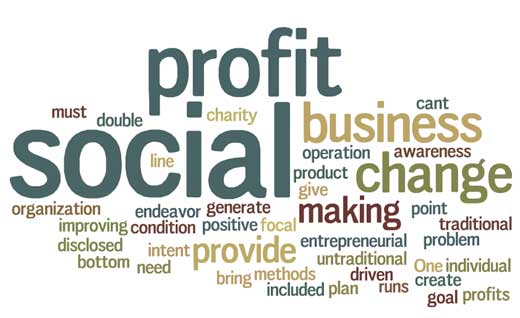I think many communication and social media practitioners are looking back over the last few years and making assessments. We are looking at success, failures, challenges, and where to continue on this path of social understanding. One of the things I have some to realize is that it takes time!
It does…it takes time. Working with major, large organizations…I have learned a lot. What have I learned, well…employing a social strategy takes time. One of the biggest selling points of using social strategies is the low cost for the technology and commitment to community building. Well…the investment is strategy and the human capital. Over the last two years, I have learned a lot. So here are a few lessons I have learned along the way, especially with large organizations.
Lesson #1 – It is more than Twitter and Facebook. It is more than just opening an account, seeking out followers, and trying to have a conversation. Opening an account is easy, but it begins with creating a plan. I look at this as writing a start-up business plan for an entrepreneurial company. It is creating a path that is a barometer, not a ruler. Especially in large organizations like hospitals & universities, there are so many silos. So they plan has to start small and build on successes. Test one area, find a good model and begin trying to execute in other areas of the organization.
Lesson #2 – It takes a commitment from leadership. It is more than getting the mid-level decision makers involved, you need top brass involved. They are the ones that not only support the message, but can also engage in the strategy. We found much success with building blogs for the C-Suite, allowing them to write passionately. When employees feel like they can access the top brass, they are willing to engage in social, online conversations.
Lesson #3 – It takes commitment to community. Reaching out to brand ambassadors has to happen beyond the marketing and pr departments. They are the ones who can guide the organization, but they must empower those inside the organization to use the technology as a way to connect with others. Go where the people are and allow the technology enable to connectivity. One the smartest things I heard was Clemson University started an advisory board for Social Media. This board met once a month and guided internal departments on best practices. Instead of micro-managing the community, they worked with them on graphical standards and allowed the community to naturally connect.
Lesson #4 – It requires a commitment from IT/IS/HR. Yes…many hospitals are struggling whether to allow employees inside the organization to be able to access social outlets. It is a productivity and bandwidth conversation, yet more and more employees can access social outlets using smart phones and tablets. Opening access empowers the community to connect within the walls of the organization. Working with IT/IS and HR is important to find ways to allow employees have access to social outlets and educate employes on best practices and social media guidelines for their jobs descriptions.
Lesson #5 – It takes commitment from Brand/Graphic Standards gatekeepers. Building graphics, avatars, and other elements for organizations social outlets takes a shift in thinking. It is more than protecting the brand, it is about how to take a brand and represent it in social outlets. When people see a company logo on a social outlet, what is the expectation of engagement? Also…thinking through how to take logos that do not resonate in 50×50 pixels takes lots of thought especially when considering traditional branding guidelines. Engaging these gatekeepers is key, bring their input to the table and educating all parties how to implement graphics across an organization. Take a look at large organizations with many departments. Maybe it makes sense for each to have multiple social accounts, how do you represent the brand yet differentiate between departments…it takes discussion, thought, and planning.
Lesson #6 – It requires engagement with your brand ambassadors including employees. This goes back to the IT/IS/HR discussion. Especially for large organizations, your employees can be your largest brand ambassador. If you restrict the technology that could connect these individuals, you may be restricting your greatest potential. Brains on Fire did something special with the Fiskateers, connecting them under a message and passion for scissors. They recognized an area with tremendous potential for community connection and engaged them using technology that made sense. Hats off to BOF!
Lesson #7 – It takes passion, passion for your mission and message. Social outlets are being used for “Push” marketing, pushing our messages on people. Well, is that an engaging conversation. It takes passion. The people that lead your social cause should be passionate about the cause, allowing the social technology to naturally connect them to others. Fan bases, followers want to connect with people they trust and who share a common passion. If those who are socially leading are not passionate, then it becomes noise in this big ole pond of digital discourse. Passionate writing, passionate tweeting, passionate video content, passionate message…passionate people connect with passionate people.
Lesson #8 – The message has to come from within…let the community empower the message. It does…outside advertising/pr/messaging firms should not tweet, update, blog, etc. for the organization. The message has to come from the people that believe in the message, that live inside the organization/community everyday. It is about people, stupid…and people want to connect with real people.
Lesson #9 – Their are so many more social outlets than the mainstream outlets. There are so many other social outlets out there than your typical Twitter, Facebook, YouTube, Quora, etc. My wife interacts on a social outlet called “The Bump.” A chat room for women who are expecting babies. She is connecting with tons of women all over, building relationships and sharing stories. How about Polyvore, my sister-in-law loves this social outlet for fashion trends. You have to go where the community is engaging, build relationships where the conversations are the best.
Lesson #10 – It does not happen overnight. It does not…it takes time, patience, a good plan, and commitment to building a strong, long-lasting community.








